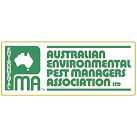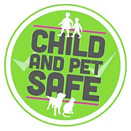At Allure Pest Solutions, we specialise in providing professional termite and pest control services in Thornlands. With over 20 years of experience, our team offers eco-friendly pest management solutions tailored to your home’s needs. We understand the unique pest challenges in Wynnum, and our services are designed to protect your home and business from termites, rodents, and other pests.
Thornlands
We provide multiple options in our quotes to ensure the client has choices. We have access to the product representatives and can work out the best option for the owner and their property. Our aim is to leave your home better than when we found it.
Thornlands
Thornlands was once best known for its fertile red soil and strawberry farms — so much so that many locals still remember buying punnets from roadside stalls long before housing estates took over.
Metric Rating (1 Low – 10 High)
6 Forestry index – Thornlands retains a decent amount of tree cover, particularly around conservation parks and nature corridors. Pockets of eucalyptus woodland remain scattered through semi-rural properties and reserves.
7 Water index – The suburb enjoys close proximity to Moreton Bay, with nearby creeks and wetlands adding to its natural charm. Crystal Waters Lake is a small but central aquatic feature within the community.
5 Paperbark index – Paperbark trees (Melaleuca spp.) are common in low-lying and wetland areas, especially along Eprapah Creek and other natural water systems in the region.
6 Gumtree index – Various eucalyptus species, especially coastal gums, are found throughout the suburb’s parklands, contributing to a distinctly Aussie landscape.
4 Density – While development has ramped up, Thornlands still offers a mix of low-density residential housing and larger blocks, preserving a more open, semi-rural feel in many pockets.
Developed 2000–2020 – Over the past two decades, Thornlands has transitioned from a quiet, farming-focused area into a growing residential suburb, driven by its bay proximity and family-friendly reputation.
The Allure Pest Solutions Difference

Termite Treatments in Thornlands
Termites are one of the most destructive pests in Thornlands. Early intervention is essential to prevent significant damage to your property.
Our team provides comprehensive termite inspections, advanced treatments, and prevention strategies to safeguard your home from these silent destroyers.
- Termite Inspections: Thorough inspections to identify termite activity and assess potential risks to your property.
- Termite Treatments: Eco-friendly solutions like liquid treatments and baiting systems to eliminate termites effectively.
- Termite Prevention: Proactive measures and ongoing monitoring to ensure your home stays termite-free.

General Pest Control in Thornlands
From cockroaches and rodents to spiders and ants, our general pest control services protect your home from a wide range of pests. We use eco-friendly treatments that are safe for your family and pets, delivering long-term protection without harming the environment.

Pest Inspections in Thornlands
Regular pest inspections are essential to detect early signs of infestations before they become major problems. Our team conducts detailed assessments of your home to identify potential pest risks and provide you with a customised treatment plan.

For larger Properties we Offer Weed Spraying in Thornlands
We provide weed spraying services to help you maintain a beautiful, healthy garden or lawn. Our team uses targeted treatments to control invasive plants and prevent weed growth around your property.
The Allure Pest Solutions Difference
Experience You Can Rely On
With 20 years in the industry, our highly trained team delivers specialised pest control solutions tailored to your needs.
Your Property, Our Priority
We provide comprehensive protection against termites and pests, ensuring your home and business are safeguarded for the long term.
Building Long-term Relationships
Honesty and care are at the heart of everything we do. We treat every customer like family, offering personalised service and ongoing support.
Sustainable Solutions for a Safer Future
We embrace eco-friendly practices, such as lures and traps, to provide effective and sustainable pest control that protects both your home and the environment.
A Proven Track Record
With strong customer reviews and a history of success, we’re often called in when others have failed, proving our ability to tackle complex pest challenges. AEPMA 2023 Pest Managers of the Year.
Quick, Efficient, Reliable
We pride ourselves on rapid response times. Whether it’s a live termite infestation or a routine inspection, we handle it with efficiency and care.
Projects
Termite Treatments in Thornlands
At Allure Pest Solutions, we’re proud to have worked on many homes and businesses throughout Thornlands and nearby areas.
Service Areas
Our pest control services extend throughout Greater Brisbane to The Sunshine Coast, including the following suburbs.
Each suburb in Brisbane has unique pest challenges, and we’re here to help with targeted solutions for your area.
Contact Us
Getting in touch with Allure Pest Solutions is easy. Whether you need a quote, have a technical enquiry, or simply want more information, we’re here to help. Use the links below to quickly reach the right area for your needs.
Service Areas
Explore the map to see our full service areas in Greater Brisbane to The Sunshine Coast and click on individual suburbs for more details about our local pest control services.
FAQ
-
How long do termite treatments last?
How long do termite treatments last?
How long a termite treatment lasts really depends on the type of system used and how well it’s installed. In most cases, a Termidor Termite Management system can offer protection for up to 8 years, but that doesn’t mean it should be left unchecked. Regular termite inspections are essential to make sure the treatment is still doing its job and your home stays protected.
-
How can I tell if I have termites?
How can I tell if I have termites?
Termites can be sneaky, and often the signs aren’t obvious until damage has already started. You might notice things like hollow-sounding timber, mud tubes along walls or footings, or even bubbling paint that looks a bit like water damage. If something doesn’t look right, it’s always worth having a professional take a closer look—early detection makes a big difference.
-
How often should I have a Termite Inspection?
How often should I have a Termite Inspection?
We recommend having a professional termite inspection at least once a year—even if you’ve had a treatment done. Termites can be active year-round, and regular checks are the best way to catch any early signs before they become a bigger problem. It’s a small investment for peace of mind and long-term protection of your home.
-
How do Termites get into a house?
How do Termites get into a house?
Termites are clever at finding their way in, often through tiny cracks in concrete slabs, gaps around pipes, or even through weep holes in brickwork. They’re drawn to moisture and will travel underground or build mud tubes to reach your home without being seen. Once they find a way in, they can start feeding on timber and other materials without any obvious signs at first.
-
What does General Pest Control cover?
What does General Pest Control cover?
General pest control usually covers common household pests like cockroaches, ants, spiders, and silverfish. It’s designed to help manage pests around your home and tackles any current activity inside. Depending on your property and the time of year, we can also tailor the treatment to target specific pest issues you’re dealing with.
-
What’s the best way to get rid of termites?
What’s the best way to get rid of termites?
The best way to get rid of termites is to start with a thorough inspection so we know exactly what we’re dealing with. From there, we’ll recommend a treatment plan that suits your home’s construction and the level of activity—whether that’s a perimeter management system, a baiting system, or a combination of both. The key is not just killing the termites you see, but protecting your home from future attacks too.







